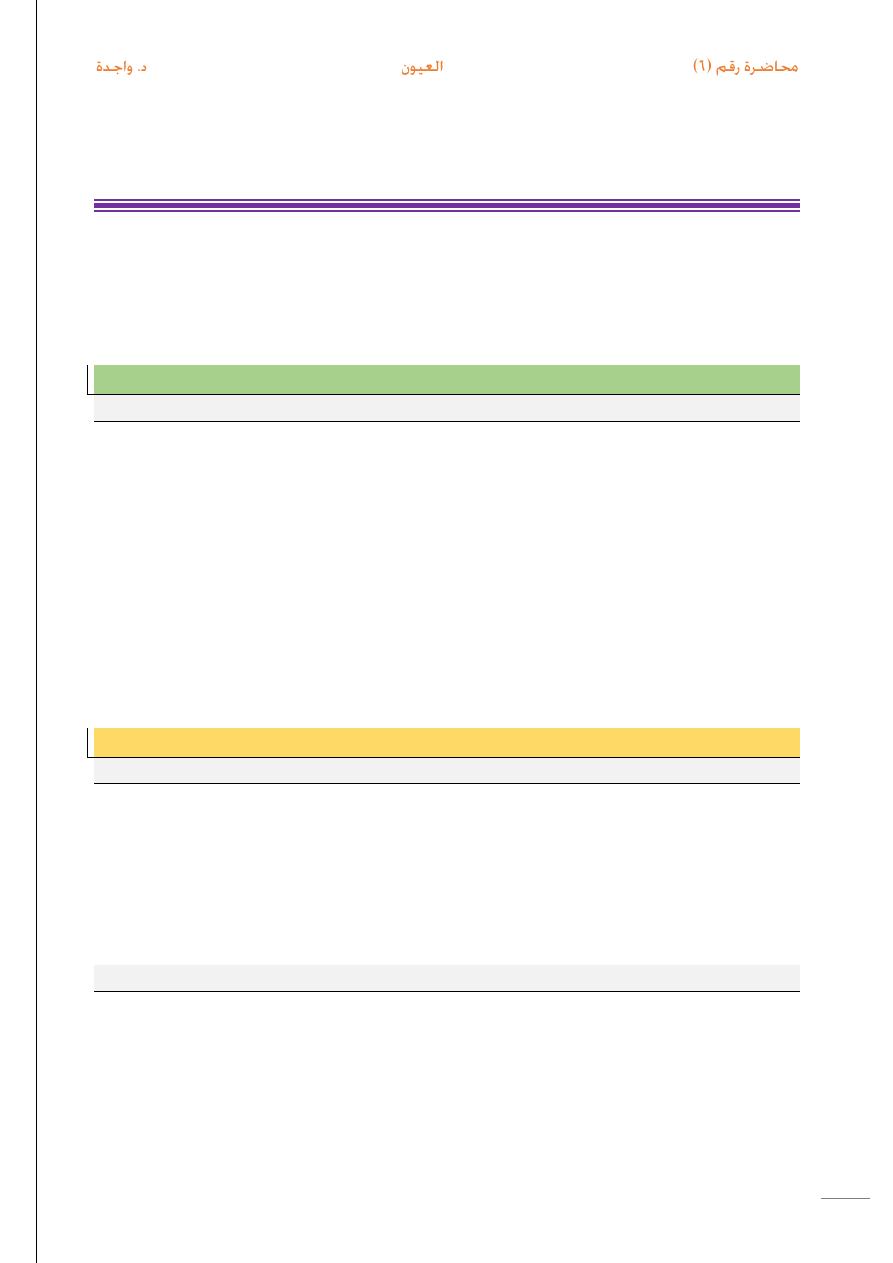
1
Uveal Tract
It is the intermediate coat of the eyeball
It consists of
Iris & C.B. anterior uvea.
Choroid posterior urea
Anatomy of iris
Gross Anatomy
It is the anterior part of uveal tract.
It is a pigmented circular diaphragm perforated in its center or
slightly nasal = (pupil).
It divides the space between the cornea & the lens into anterior
chamber and posterior chamber.
It has 2 borders & 2 surfaces.
Borders: (1) Pupillary border: is the free border.
(2) Cilliary border: attached to the middle of ant. Surface of C.B.
Surface:
(1) Posterior surface: smooth& darkly pigmented.
(2) Anterior surface: shows fine irregularities “iris pattern"
The Ciliary body
Gross Anatomy
It is the intermediate part of the uveal tract.
It extends from the iris to the choroid.
Shape: triangular in antero-posterior section.
1- Base (ant. Surface): with the iris attached to its middle.
2-
Outer surface: separated from the sclera by supra ciliary space.
Minute Anatomy
(1) Ciliary epithelium: continuous with iris epith.
2 layers: - Outer: pigmented & flat (forward continuation of RPE).
- Inner: non-pigmented & cubical.
(2) Ciliary processes:
75 plications, for aqueous formation (from the non-pigmented epith).
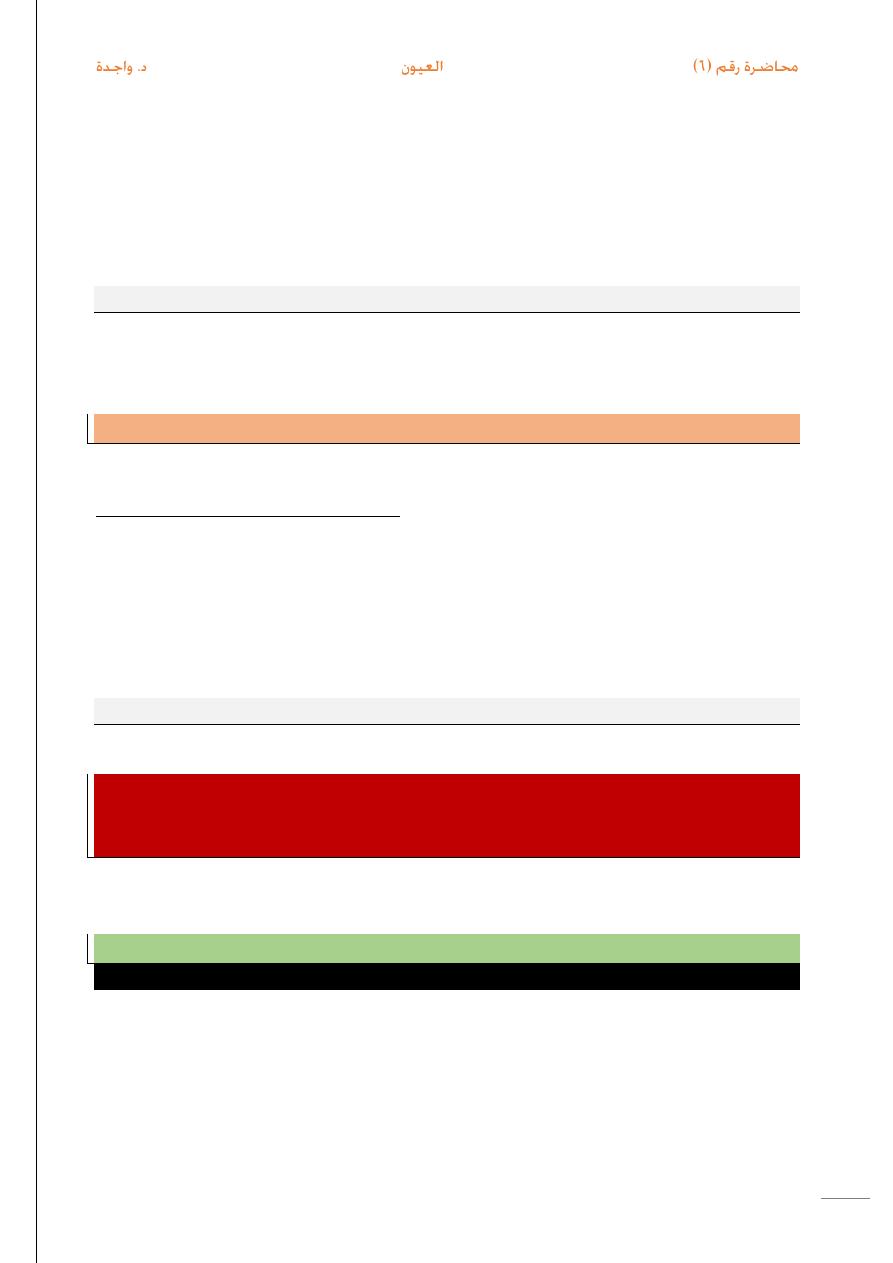
2
(3) Cilliary muscles: 3 parts:
i.
Longitudinal (outermost) extends form sclreral spur to the
suprachoroidal lamine.
ii.
Circular (inner ant.) forms a ring around the cilliary processes.
iii.
Oblique: connects (i) & (ii).
(4) Stroma: C.T. containing BV. , Nerves & pigment cells.
Function
1. Ciliary processes aq. formation (from non-pigmented ciliary epith.
2. Ciliary muscles: Circular fibers accommodation.
Longitudinal. F. aq. drainage (by traction on scleral Spur).
Choroid
It is the posterior part of uveal tract (from the orra serrata. to the optic
nerve).
It consists of the following layers:
1. Suprachoroidal lamina.
2. Vascular layer: (stroma)
(i) Outer: large vessels.
(ii) Middle: Small vessels.
(iii)Inner: chorio capillaries.
3. Bruch's membrane (firmly adherent to the retina)
Function
Nutrition to the outer 1/3 of retinal layers.
Uveitis
It is inflammation of the uveal tract + affection of adjacent stracture as the
retina & vitreous
Classification
I-Clinical classification
1- Acute: - Sudden symptomatic onset.
- Persistent for 6week or less.
2- Chronic: -Gradual, asymptomatic onset.
- Persistent for months or years.
3- Subacute: in-between chronic & acute.
4- Recurrent
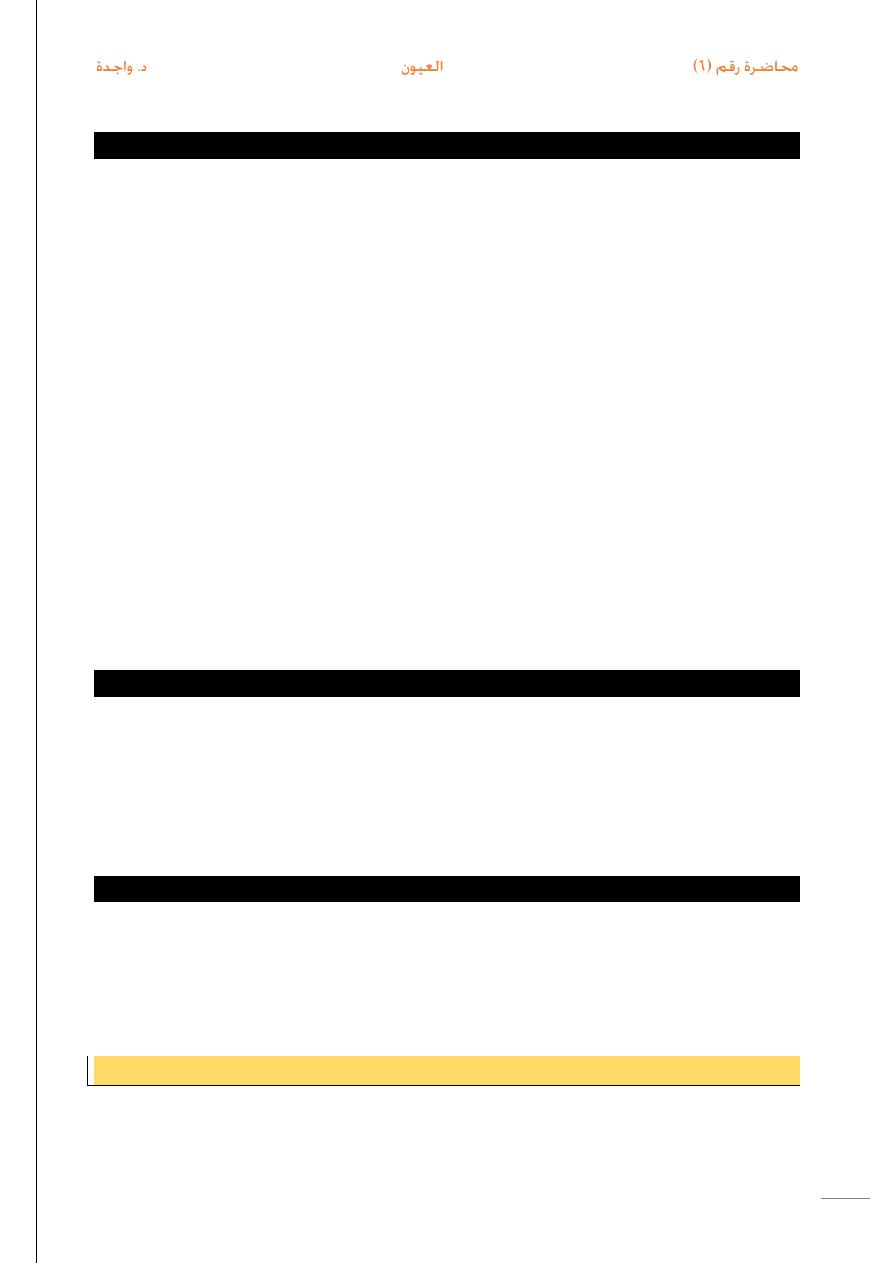
3
II- Etiological classification
1) Infection:
a. Exogenous infection: Trauma, Blunt, surgical trauma and following
penetrating trauma.
b. Endogenous
2) Non-infection:
a. Associated with arthritis: Reiter syndrome, ankylosing spondulitis and
CJA.
b. Non-infective systemic diseases: Sarcoidosis, Behcet syndrome, VKHS,
sympathetic ophthalmia, DM and Gout.
3) Secondary to ocular diseases:
a. Keratitis.
b. Scleritis.
c. R.D.
d. Subluxation & Dislocation, (mechanically irritate iris).
e. IOFB. (If chemically active).
f. IO tumors.
g. Lens induced phaco toxic (allergic):
h. Due to rupture of lens capsule releasing lens proteins (Ag.)
hypersensitivity
III- Anatomical classification
1- Ant. Uveitis: inflammation of iris & ant part of CB (pars plicata).
2- Intermediate uveitis (pars planitis): inflammation of pars plana &
periphery of choroid & retina.
3- Post. Uveitis: inflammation of the choroid + retina, vasculitis or vitritis.
4- Pan-uveitis: inflammation of all the uveal tract e.g. endo or
panophthalimitis
IV –Pathological classification
1- Granulomatous: TB, Syphilis, usually associated with iris nodules &
mutton fat KPs.
2- Non-granulomatous:
a. Purulent: PMN cells.
b. Exudative : Mononuclear cells
(Ant. Uveitis) Irido-Cyclitis
It is inflammation of the iris & ant part of CB (pars plicata)
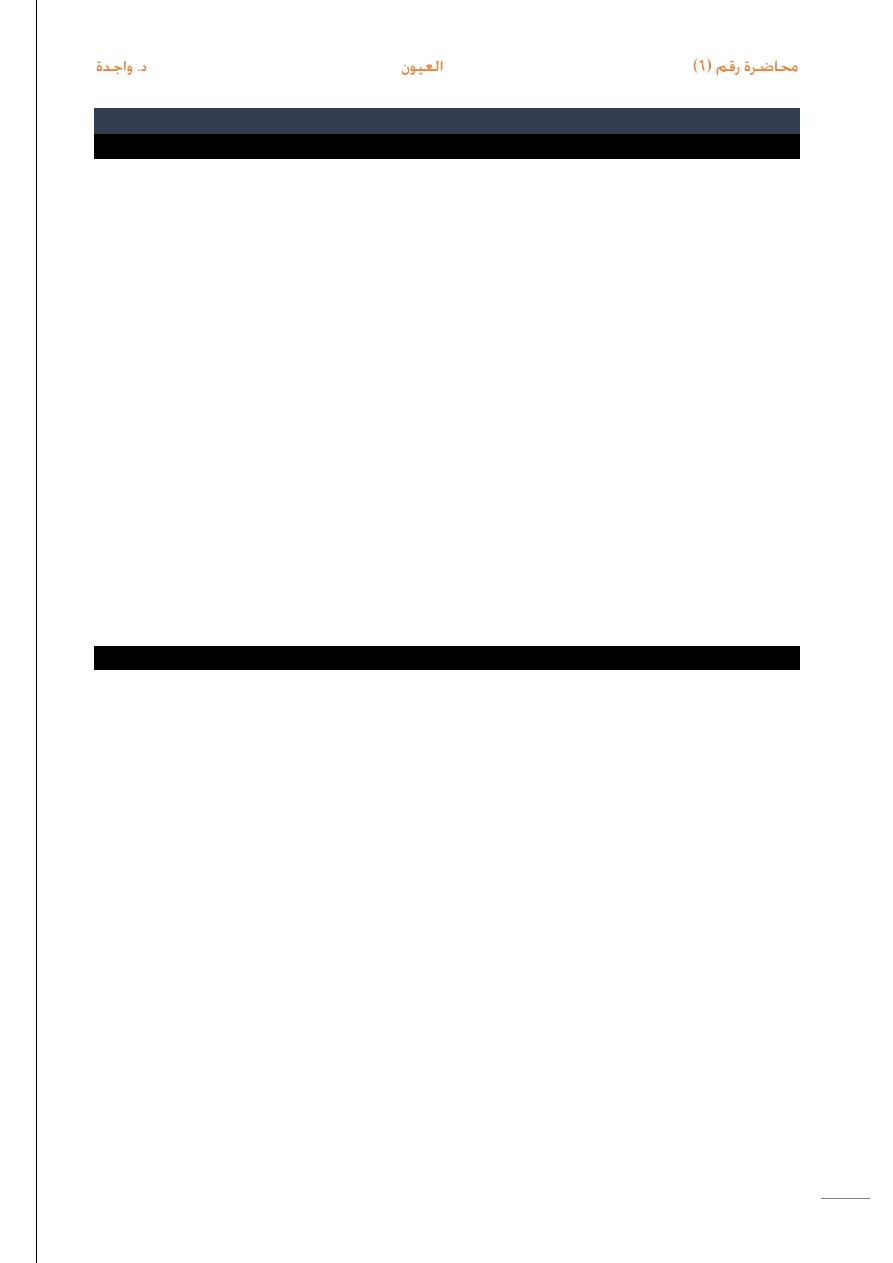
4
Clinical picture:
Symptoms:
(1) Pain: *due to
a. Irritation of iris sensory nerves by toxins.
b. Spasm of iris and C.B. ms.
c. 2ry glaucoma.
(2) Photophobia (light miosis spasm pain).
(3) Lacrimation.
(4) Blepharospasm.
(5) Rapid painful decrease of vision: due to
(i) Early:
a. Cornea: Hazy (edema) destruction of endothelium) & Kps.
b. A.C & Vitreous: Turbid (exudates & inflamm. Cells)
c. Lens: Pigment deposits on ant. Capsule.
d. Spasm of ciliary ms (accommodation)
e. Macula : Cystoid macular oedema
f. Papillitis.
(ii) Late: due to complications e.g.
a. Cataract (due to diffusion of toxin into the lens).
b. Glaucoma.
c. Cyclitic & pupillary membranes.
Signs:
(1) Lid: oedema .
(2) Conj: Ciliary injection (RED EYE), chemosis.
(3) Cornea: Hazy (edema)
Keratic precipitates (kps):
These are:
o Inflammatory cells (from dilated iris & CB vessels).
o Deposited on the corneal post. Surface (convection current).
o Shape: triangular in middle & inferior zone ( due to gravity ).
(4) A.C. : 1- Aqueous flare (plasmoid aq):
Due to reflaction of light of slit lamp by the particles ( cells , proteins)
suspended in the AC.
(5) Iris:
a. Muddy (loss of pattern) due to accumulation of edema in the stroma
& exudates on the surface of iris
b. Altered iris color due to iris atrophy heterochromia).
c. Granuloma or nodules on the surface of the iris.
d. Robeosis: In longstanding cases.
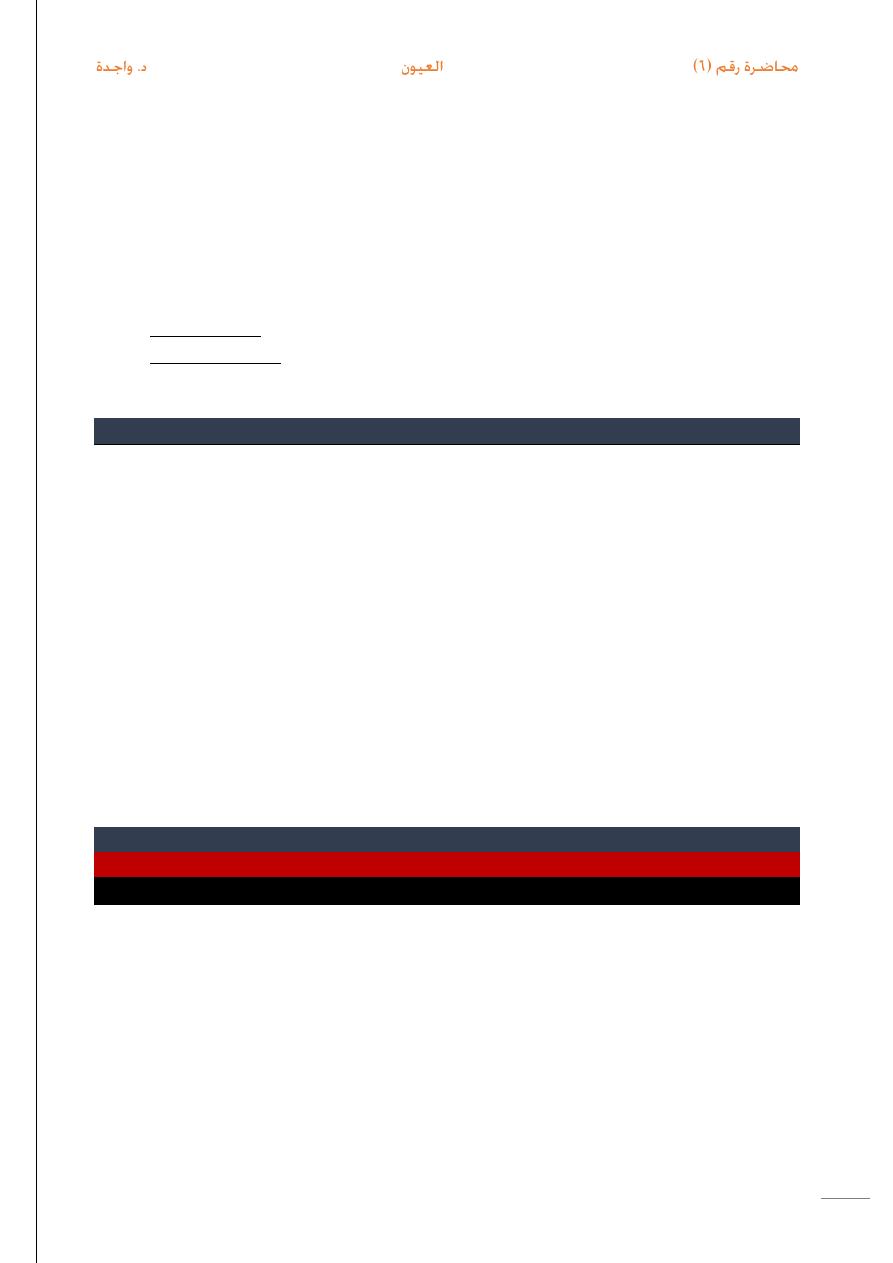
5
(6) Pupil: (i) Early: congested & sluggish reaction
(ii) Late: irriegular (due to synechia formation).
(7) Lens: pigment deposit on ant. Capsule.
(8) Refraction: spasm of ciliary ms transient Myopia.
(9) Vitreous:
-Hazy (inflammation exudates poured from C.B).
-Snow balls in the ant. Part of the vitreous.
(10) Tension (IOP):
Acute phase: low IOP (cyclitis decrease aqueous formation).
Chronic phase: increased (Synechia formation).
* Macula: CME
Investigations
(1) History: Trauma, D.M. T.B.
(2) General exam: for specific iridocyclitis.
(3) Radiological: X-ray: -chest (T.B, Sarcoidosis).
CT scan: sinus.
(4) Laboratory:
a. Urine: Pus, sugar.
b. Blood: Wasserman, ELISA.
c. Skin: Tuberclin.
(5) Immunological tests:
-HLA: for Behcet, VKH syndrome.
-ANA: for arthritis.
(6) Tissue sampling: - Conjunctival biopsy.
-AC or vitreous aspirate:
For cytology & PCR
Treatment
I- Non-specific treatment:
A) Local treatment:
* Topical: in the ant. Uveitis.
(1) Atropine 1%: until the pupil dilates 3 times \ day.
(2) Corticosteroid:
-Examples: * Dexamethasone hydroxyl.
*Prednisolone acetate.
-Action: (1) Anti-inflammatory.
(2) Anti-allergic.
(3) Prevent Cyclitic membrane & Synechia formation.
(4) Decrease the release of destructive leucocytic enzymes
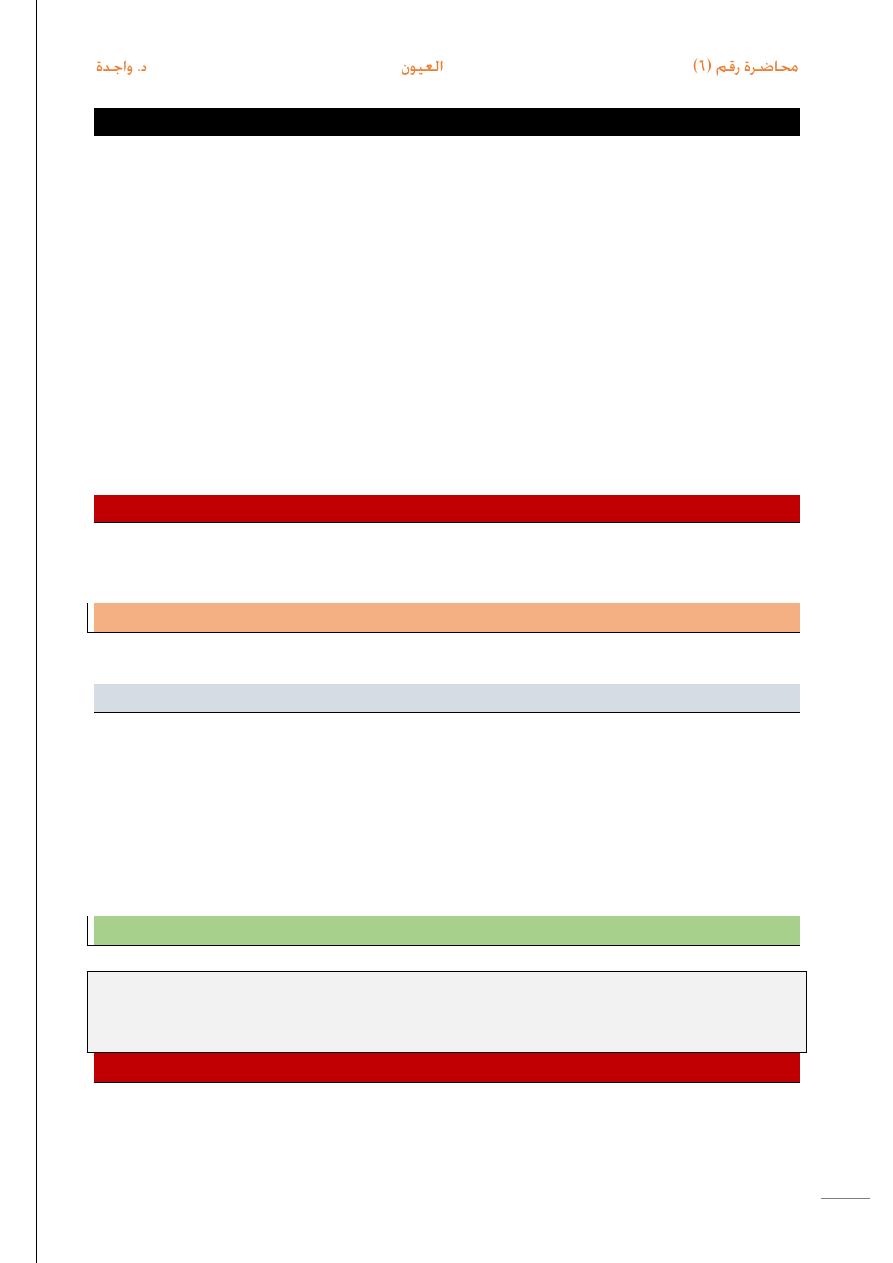
6
B- Systemic treatment
1-Systemic steroid oral or injection:
*Indication: in severe cases.
*Dose: 1mg/kg/day.
*Contraindication:
Relative:
a. Infective cases.
b. Diabetic patients.
c. Cardiac & renal patients & hypertensive. iv- Peptic ulcer patients.
2- Systemic antibiotics: In infective cases.
3-NSAI drugs oral: if steroid are contraindicated
4- Analgesics.
5- Immuno-suppressive agents: e.g. cyclosporine injection in steroid
resistant cases.
II-Specific treatment:
According to the cause: control of D.M.
Treatment of syphilis, TB or Toxoplsma
Pars Planiti
It is inflammation of pars plana + the periphery of the retina & choroid.
Symptoms & signs:
As before but there is no ciliary injection, KPs, pupillary changes or aq.
Flare.
Vitroues floaters due to presence of snowballs.
Exudate deposited on pars plana & periphery of the retina called
“Snow banking “.
Defective vision: due to papillitis , cyclitic membrance or CME .
Sever vitiritis
Post. Uveitis
Choroditis may be:
(1) Exudative.
(2) Granulomatous.
(3) Suppurative.
1-Exudative:
Definition: it is non-specific choroiditis with much exudation.
Etiology: Allergy to endogenous toxins (TB, strep, Toxin of Ankylostoma ).
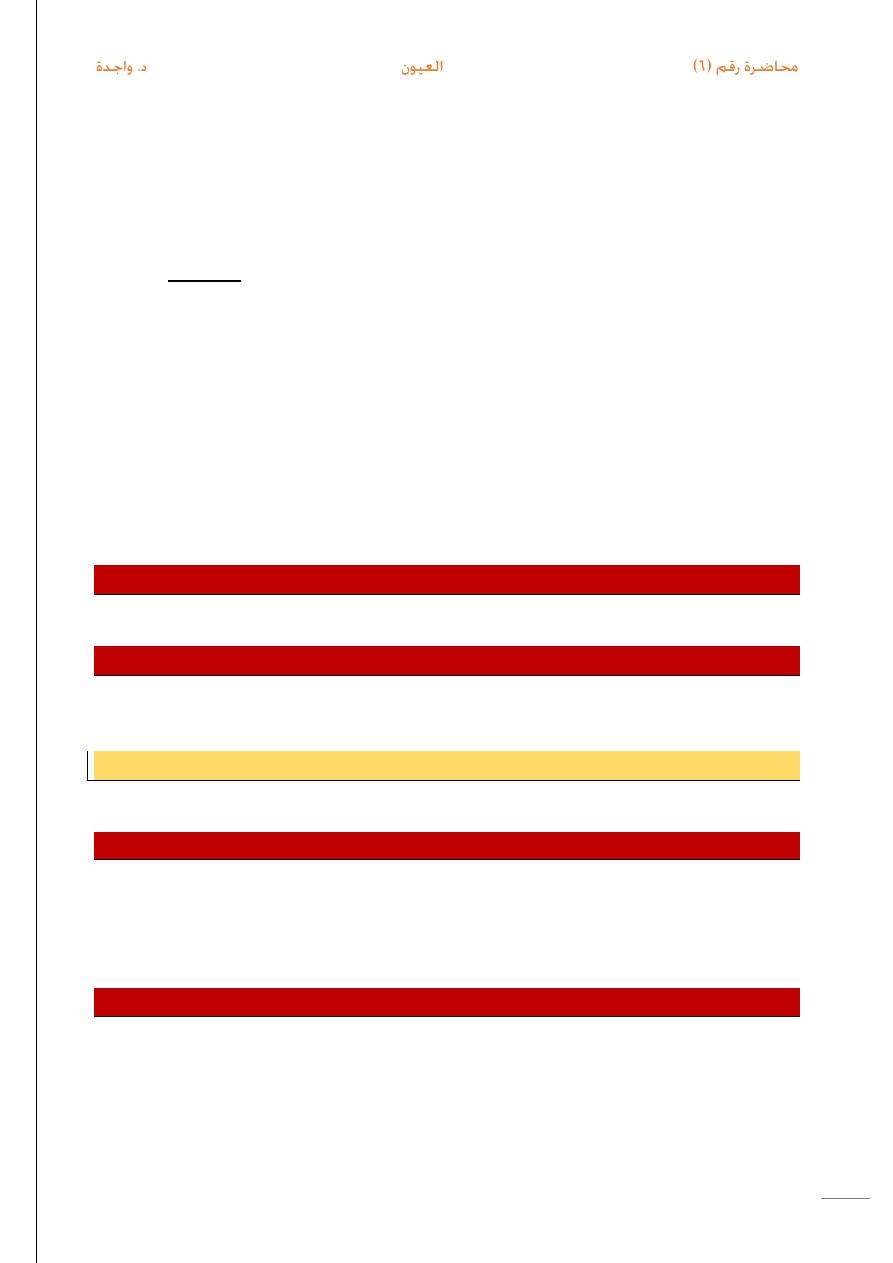
7
Clinical picture:
Symptoms
1. Meta morphopsia, micropsia, macropsia (due to distortion of photo
– receptors).
2. Photopsia (due to irritation of photoreceptors by inflammation).
3. Scotoma:island of blindness surrounded by normal field due.
4. Painless decrease of vision
Signs:
1.
Active focus
o -Yellow,elevated
o -Ill-defined.
o -Vitreous haze.
2. Healed focus
o -White,not elevated
o -Well-defined.
o -Vitreous-clear
Treatment: as iritic
2-Granulomatous:
Granuloma is formed
3-Suppurative:
(1)Endophthalmitis.
(2)Panophthalmitis
Endophthalmitis
Is a purulent inflammation confined to intraocular structure, but the outer
coat of the eye (cornea, sclera) and tenons capsule are free.
Etiologic agent:
1. Bacterial:
o Gram+ve;(staph epidermis, Staph aureus).
o Grame-ve(Pseudomonas, proteus, Escherichia coli).
2. Fungal: Candida, Aspergillus.
Clinical picture:
Symptoms
Pain, hyperemia and decrease vision
Signs: lid edema, corneal edema, hypoyon
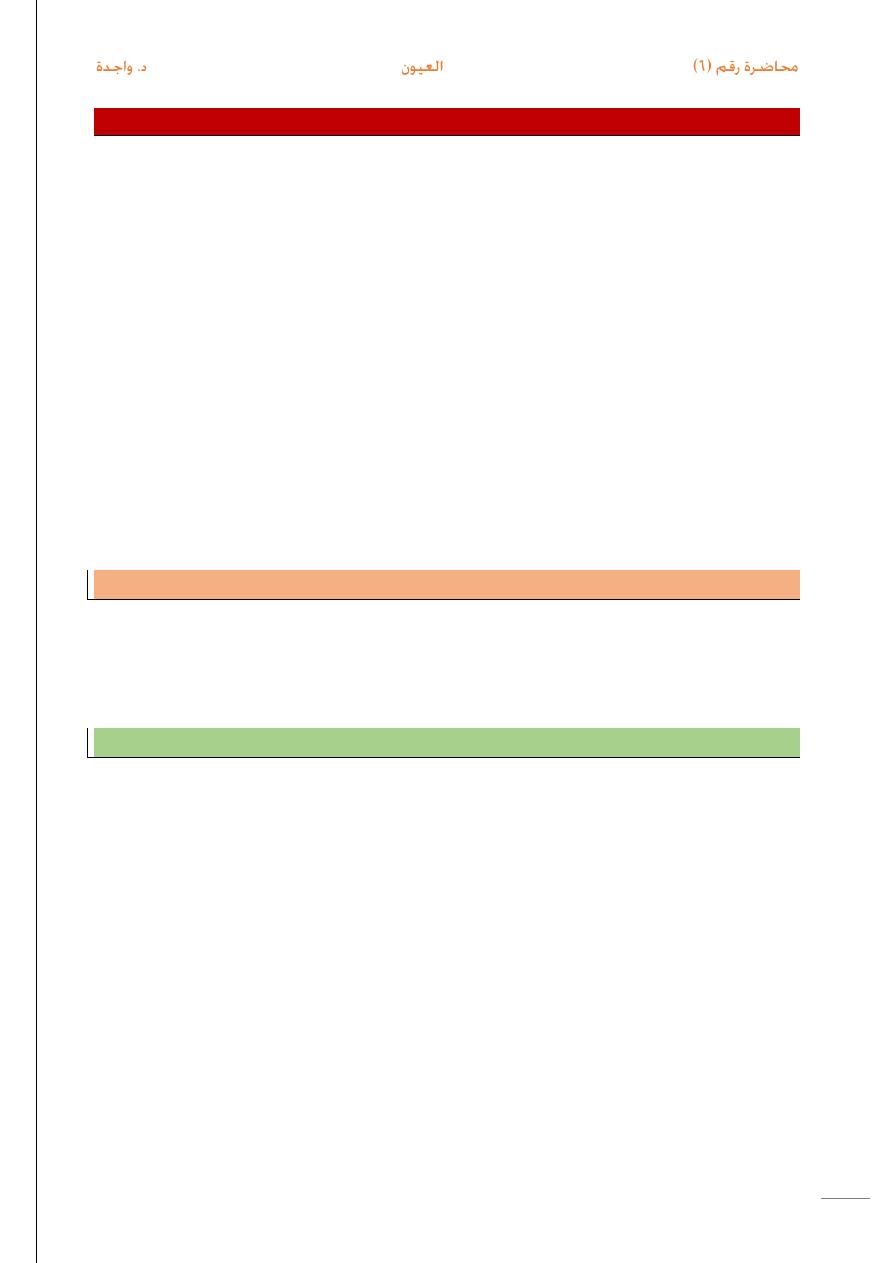
8
Management of bacterial endophthalmitis:
1. Hospitalization
2. Vitreous aspiration for smears, cult, and sensitivity.
3. Anterior chamber paracentesis for smears.
4. Antibiotics:
a. Intravitreal:
o 1mg of vancomycin+2.25mg of ceftazidime or amikacine.
b. Subconjunctival:
c. Topical(drops):
o Vancoycin:50mg\ml
o Ceftazoline:50mg\ml
d. Systemic:
o Amikacin
o Ciprofloxacin 500mg every 12 hours for5 days.
5. Steroids.
6. Vitrectomy
7. Evisceration
Panophthalmitis
As endophthalmitis but including outer coat (cornea and sclera),Tenons
capsule and soft orbital tissues.
Clinical pictures: as endophthtalmitis
Congenital anomalies
A.
Albinism
: is a deficient melanin pigment in the iris leading to
1. Reddish iris
2. Nystagmus (due to loss of central fixation).
B.
Aniridia:
bilateral absence of the iris.
C.
Coloboma of uveal tract: partial
deficiency (defect) of iris, ciliary
body or choroids due to defective closure of the cleft
D. Persistent pupillary membrane:
E. Persistence of part the anterior vascular sheath of the lens after birth.
Mubark A. Wilkins
